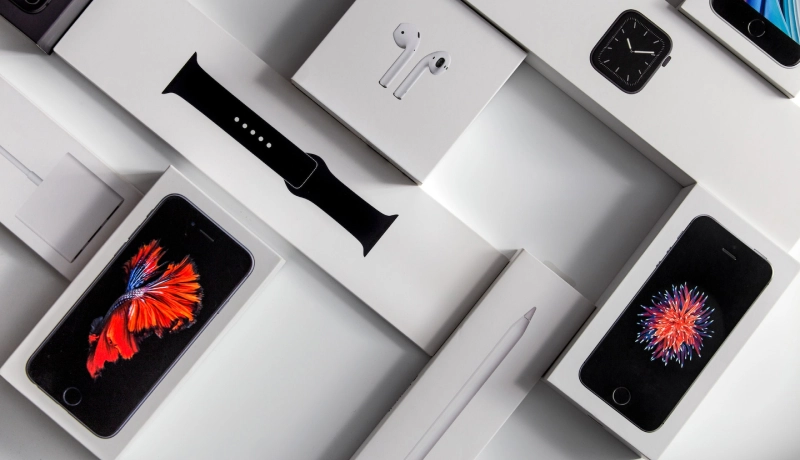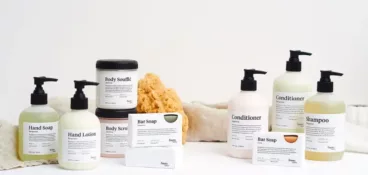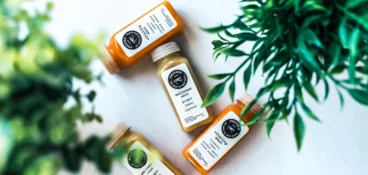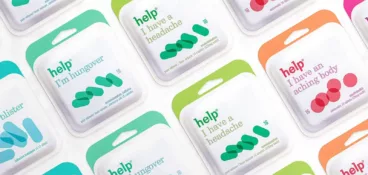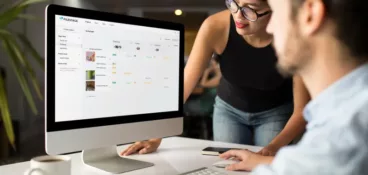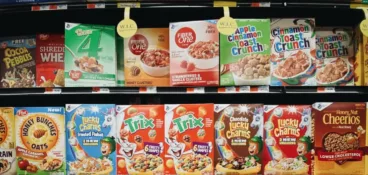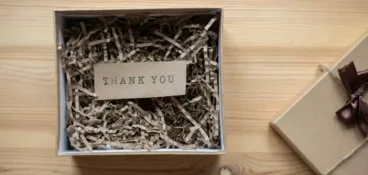Did you know that each year, 100 billion boxes are manufactured in the United States alone? If you stacked all these boxes up, you could wrap them around our planet 570 times.
What does this tell us? With so many boxes out there, creative packaging design ideas are required. And not only should they stand out and add value, they should also be sustainable.
Designing packaging has become an art that is easy to learn but difficult to master. It requires a talented packaging designer or two within an efficient content workflow.
To help you out, we’ve put together a roundup of the most inspiring packaging designs and best practices. And if you also need help reviewing your packaging artwork, check out the best packaging design software.
The fast way to get feedback on packaging
Get clear and collaborative comments right on top of your packaging artwork.
13 inspiring packaging design examples
1. Sonos – the packaging design that meets style with sustainability
Introducing Sonos, the audio wizards with a sustainable twist! They’re hitting the high notes not just with their incredible sound systems but also their eco-friendly packaging.
Pioneered by their chief packaging designer, Michelle Enright, this is a cardboard box that’s more than meets the eye. Made from sustainable materials, they’re like tiny homes for your speakers, keeping them cozy during their journey to your doorstep. And guess what? No plastic filler! Sonos is all about keeping things green and clean.
So next time you unbox your new Sonos masterpiece, feel that warm fuzzy feeling knowing you’ve made a sound choice for the planet. It’s music to our ears and the Earth’s too!
This is a brilliant example of minimalist design, one of our favorite packaging design trends.
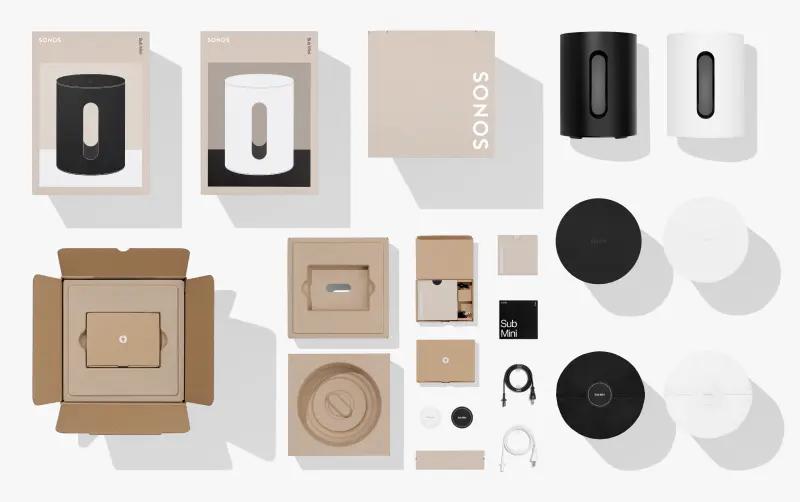
Source: Dieline
2. Toblerone – the packaging design that breaks the mold for food products
Oh, Toblerone, you sweet Swiss delight! Not only do you bring us the tastiest triangles of chocolate heaven, but you also rock some seriously cool food packaging.
That iconic triangular prism is like a chocolate mountain waiting to be conquered. And let’s not forget the hidden surprises inside. Each bite-sized piece, carefully nestled in its own little nook, is a mini adventure for our taste buds. It’s like unwrapping happiness, one delicious peak at a time.
So, next time you crave a chocolatey escapade, grab a Toblerone, and let the triangular journey begin. Just remember to share … or maybe not. It’s too tempting!
For more like this, check out our roundup of the best cookie packaging designs.
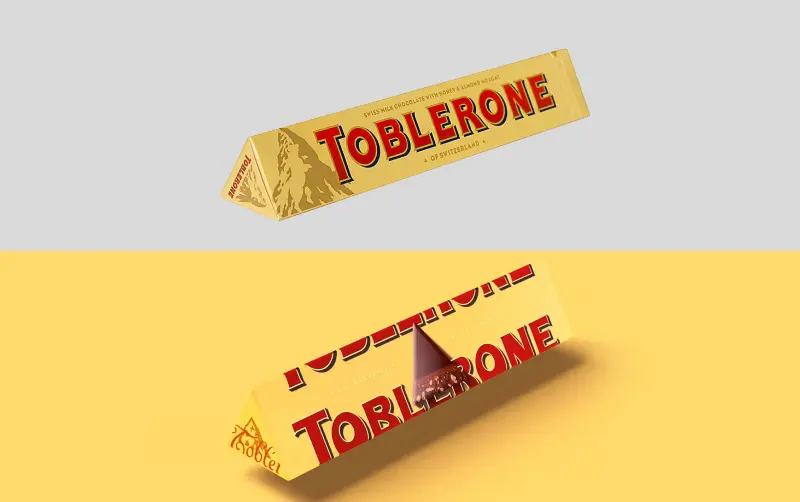
Source: Grapheine
3. Apple iPhone – the packaging design that put unboxing on the map
Get ready for a tech-tastic adventure with the iPhone unboxing experience.
Taking custom packaging design to new heights, the sleek box is like a mini treasure chest that’s brimming with possibilities. As you lift the lid, it’s like opening a portal to a world of endless wonders. The pristine iPhone, snugly nestled within, practically winks at you with its shiny goodness.
Peel off those protective layers with a satisfying peel and reveal the stunning screen, ready to dazzle your eyes. And oh, the accessories! From chargers to earphones, it’s like unwrapping a gift that keeps on giving.

Source: The Economist
4. Tiffany & Co – the packaging design that puts a smile on your face
Step into the enchanting world of Tiffany & Co, where dreams come wrapped in a beautiful blue embrace.
Their iconic custom boxes are like a little slice of joy, tied up with a satin ribbon. They whisper secrets of elegance and sophistication, making every unboxing a moment to cherish. Open it up, and you’ll find treasures that sparkle with pure delight.
From dazzling jewelry to timeless keepsakes, Tiffany’s blue product packaging box is a symbol of love, celebration, and friendship.
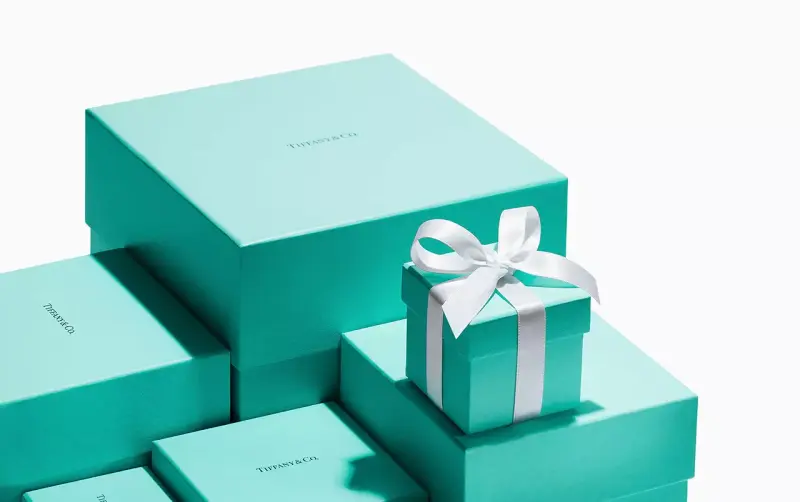
Source: IPL Packaging
5. Houseplant – the packaging design that you can collect
Prepare for some seriously stacked fun with Seth Rogen’s cannabis brand, Houseplant!
They’ve taken packaging to a whole new level of convenience and playfulness. Imagine this: boxes that are stackable like building blocks. It’s like a grown-up version of Legos! You can create your very own tower of happiness, neatly organizing your favorite Houseplant strains.
It’s a stoner’s dream come true! Plus, these stackable boxes aren’t just for looks. They’re designed to keep your buds fresh and protected, making sure that each toke is as potent as the first.
Want to see more like this? Take a look at our top picks for cannabis product packaging.
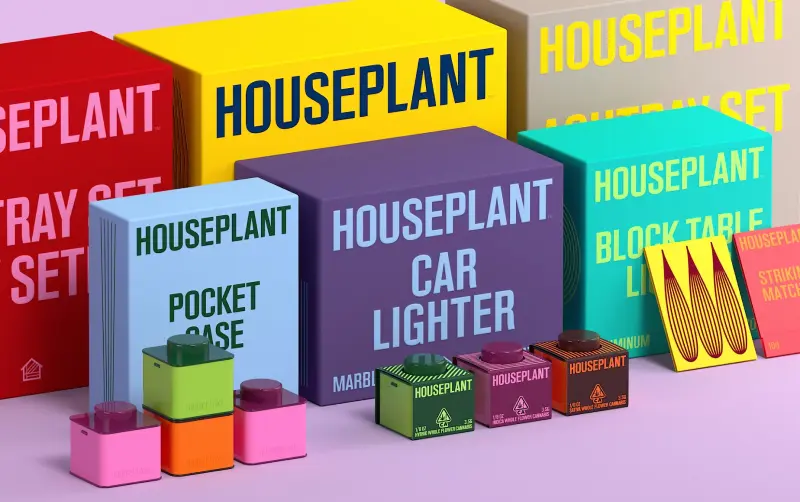
Source: It’s Nice That
6. Beavertown – the packaging design that leaps off the shelf
Get your taste buds tickled and your eyes dazzled by Beavertown’s incredible eye-popping packaging labels.
These artistic masterpieces are like a gallery on every can, begging to be admired. Bursting with color, imagination, and a healthy dose of quirkiness, each label tells a story of its own.
From whimsical creatures to mind-bending landscapes, Beavertown’s labels are a visual feast for beer enthusiasts. They’re like little pieces of art that make you smile before you even take that first sip.
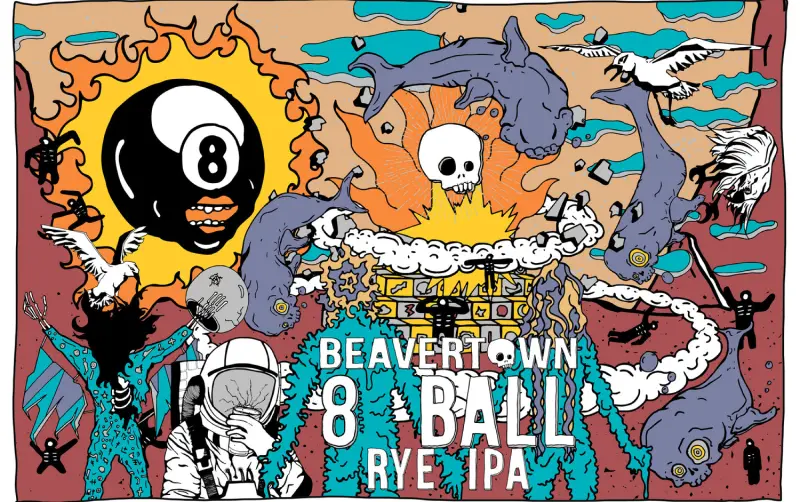
Source: Nick Dwyer Illustrations
The fast way to get feedback on packaging
Get clear and collaborative comments right on top of your packaging artwork.
7. Tony’s Chocolonely – the packaging design with a point to prove
Brace yourself for a chocolate experience that’s not only delicious but also filled with heart and purpose, courtesy of Tony’s Chocolonely.
Their packaging and label design are a treat for your taste buds and your conscience. The colorful wrappers are like a joyful burst of happiness, making you feel like a kid in a candy store.
But Tony’s Chocolonely goes beyond just pretty packaging. Their unique, unevenly divided chocolate bars represent their mission to fight against inequality in the cocoa industry. Each bite is a reminder of their commitment to fair trade and ethical sourcing.
So, when you savor that irresistible chocolate, you’re also savoring the knowledge that you’re supporting a better world. It’s chocolate with a purpose and a whole lot of love.
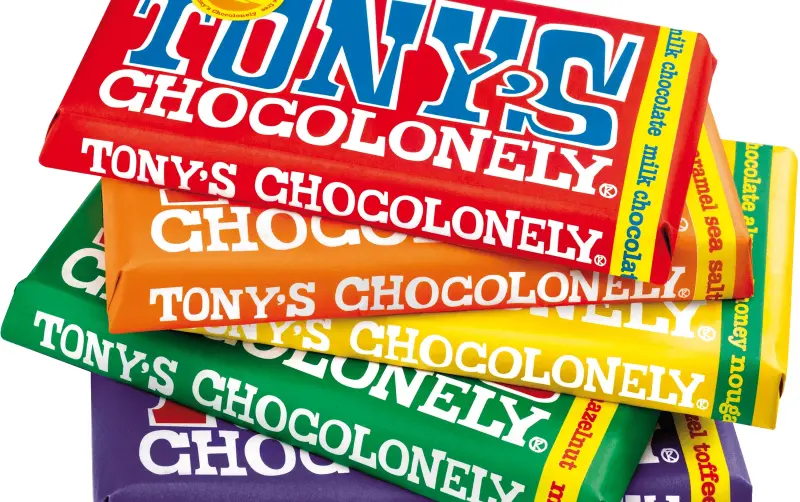
Source: Mailchimp
8. Hasbean – the packaging design that’s practically perfect
Indulge in the world of coffee perfection with Hasbean’s award-winning packaging.
These coffee connoisseurs have not only mastered the art of roasting but also the art of presentation. Their packaging is like a love letter to coffee lovers everywhere. The sleek bags adorned with vibrant designs are a feast for the eyes, promising a sensory journey with each sip.
But it’s not just about looks. Hasbean’s packaging is thoughtfully designed to keep your coffee beans at their peak freshness. So, whether you’re an espresso enthusiast or a pour-over purist, Hasbean’s packaging is your ticket to a delightful coffee experience.
Thirsty for more bean-based inspiration? Check out our roundup of the best coffee ads.
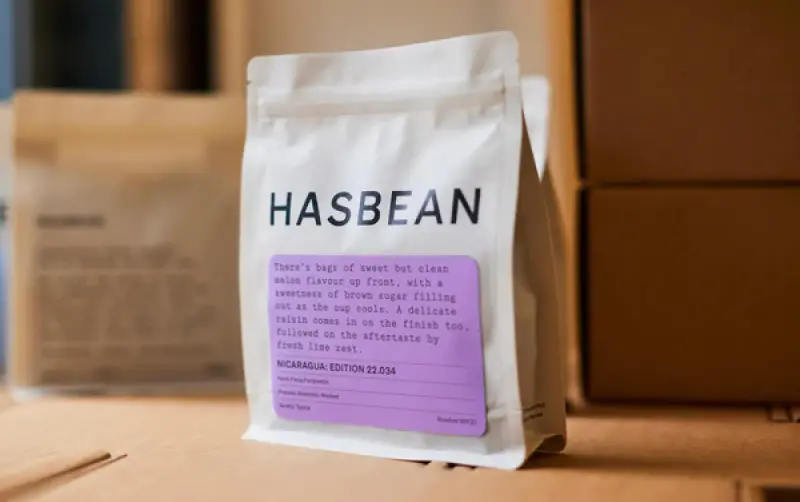
Source: Hasbean
9. Help Remedies – the packaging design that makes pharma fun
Help Remedies is here to prove that labels for pharmaceutical brands don’t have to be boring. With products ranging from blister plasters to painkillers, their fun medicine packaging finds the perfect balance between relief and whimsy.
These health heroes have reimagined the world of remedies with their friendly and playful approach. Each product comes in a vibrant and eye-catching package that stands out in the medicine aisle.
From quirky names to clever illustrations, Help Remedies’ packaging brings a smile to your face even when you’re feeling under the weather. It’s like a dose of cheer and care all wrapped up in one.
Need help making sure your packaging is compliant? Check out label compliance guide.
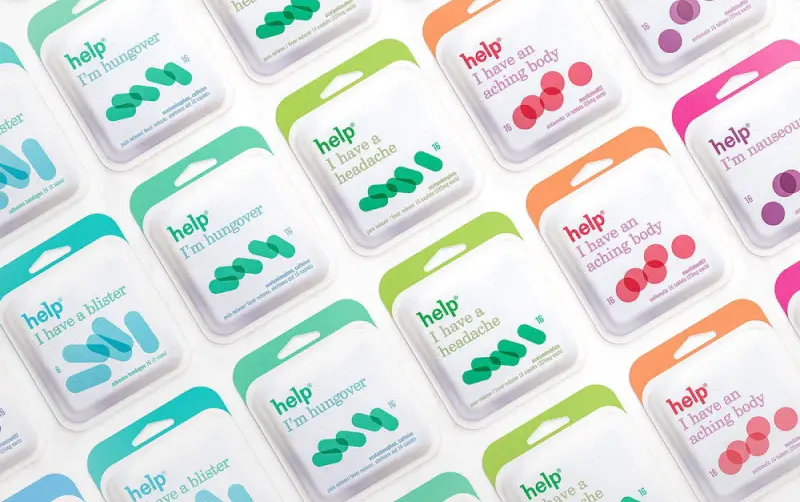
Source: Dieline
10. Nike – the packaging design that halves waste
Nike’s One Box packaging is a game-changer that’s as friendly to the planet as it is to your feet.
Say goodbye to excessive waste because Nike has taken a giant leap towards sustainability. With their innovative One Box system, they’ve found a way to halve the packaging when shipping their sneakers. It’s like a double win!
Not only do you get your stylish kicks delivered safely, but you also contribute to reducing environmental impact. Plus, opening these custom boxes is like unwrapping a gift from a friendly sneaker genie.
Want to see more from Nike? Check out our shortlist of the best Nike ads.
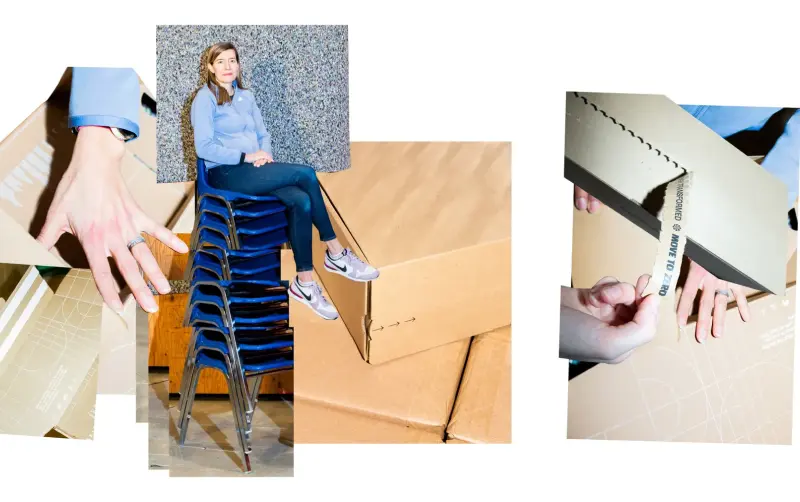
Source: Nike
11. Half Magic – the packaging design that makes makeup recyclable
Prepare to pamper yourself guilt-free with Half Magic’s recyclable PlasticFoam luxury packaging. They’ve cracked the code to keeping your skincare products safe and the planet happy. Their friendly and innovative PlasticFoam is like a superhero of packaging materials.
It’s lightweight, durable, and best of all, recyclable! So while you indulge in luxurious creams and serums, you can rest easy knowing that your beauty routine isn’t harming the environment.
When you’re done, simply toss the PlasticFoam in the recycling bin, and it’ll be given a new life. It’s a win-win for radiant skin and a sustainable future.
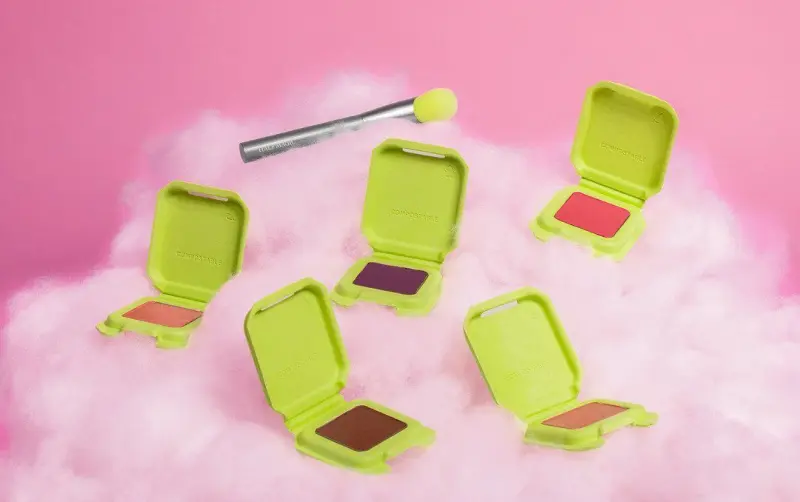
Source: Dieline
12. Who Gives A Crap – the packaging design that makes you look
Who Gives A Crap has taken plain old toilet roll and turned it into a work of art – and that’s no mean feat!
Their playful and vibrant designs on every roll bring a splash of fun to your bathroom. But it’s not just about looks – Who Gives A Crap’s packaging is also planet-friendly. Made from recycled materials and free from plastic, it’s a sustainable choice that makes a big difference.
So, every time you reach for that beautifully-wrapped toilet roll, you’re not just caring for yourself, but also supporting a company that gives a crap about the environment.
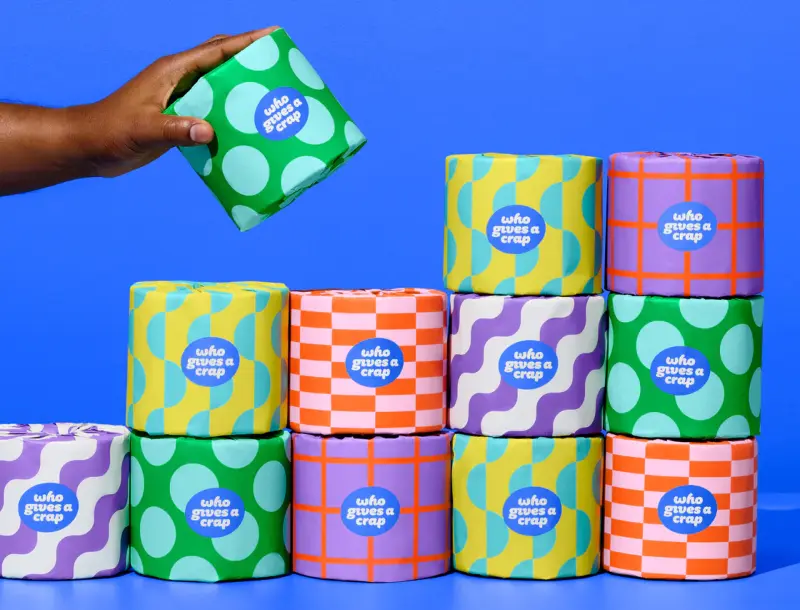
Source: Who Gives A Crap?
13. smol – the packaging design that replaces plastic
Say goodbye to plastic waste and hello to a laundry revolution with smol’s plastic-free detergent packaging!
These laundry superheroes have given us a reason to smile while washing our clothes. Their eco-friendly custom packaging is like a breath of fresh air, free from plastic and filled with good vibes
It’s a small change that makes a big impact. With smol, you can clean your clothes with a clean conscience, knowing that you’re reducing plastic waste and helping the planet.

Source: smol
Nine packaging design best practices with examples
How do you design good custom packaging? Now that you have a better understanding of how packaging design works, we can take a closer look at what distinguishes average or bad packaging designs from excellent ones.
Your optimal packaging design should meet the following best practices. The more you can combine these rules into your custom boxes or packaging artwork, the better the outcome will be.
1. Take something ordinary and make it extraordinary
Custom packaging not only protects the product and looks good, but it adds value for your customers. If done right, companies can increase sales while reducing waste and costs.
One good example of how to add practical value to a product is Bloom’s ingenious chips package design.
We all like to snack now and then, but the cylindrical shape of most product packaging can make snacking complicated. Bloom offered a solution by turning the cylindrical packaging shape into a bowl, thereby increasing customer comfort without compromising on valuable shelf space.
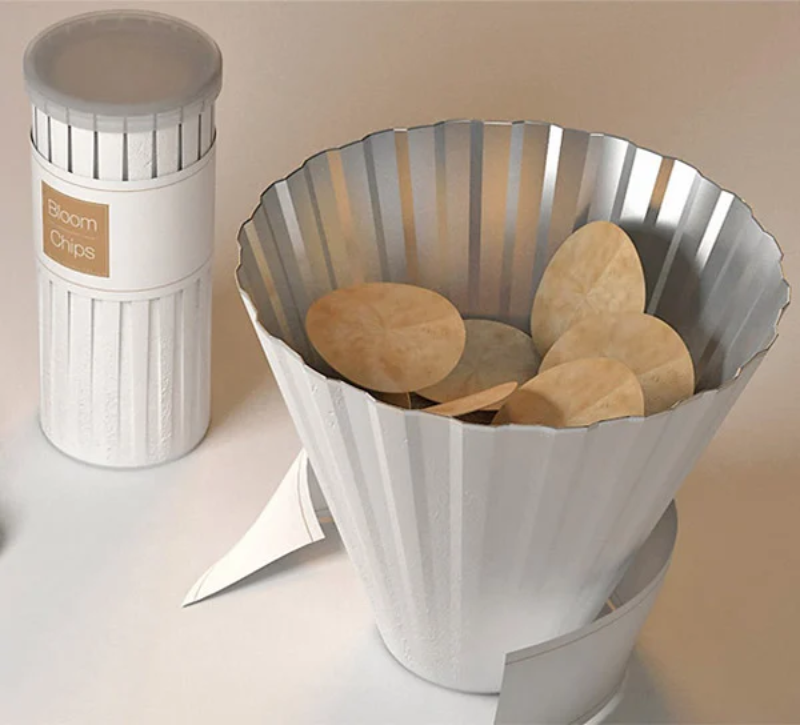
Source: iF Word Design Guide
2. Stay true to your brand
In the best case scenario, product packaging not only helps sell the product but also increases brand loyalty. Once a customer becomes a fan of your product, the selling process is much easier and you don’t have to spend as much of your marketing budget to reach the same revenue.
Achieving brand loyalty is a long-term goal of your packaging management project, but custom packaging with memorable packaging artwork can be a valuable contributor to this goal. When you create a package with your logo that customers use almost on a daily basis, they can both see your brand every day and advertise it to others at the same time.
One way to gain a stronger brand reputation, attract more loyal customers and do something good for the environment can be seen in Calvin Klein’s recycling program. Calvin Klein uses a special recycling label design to show its environmental benefits and give customers a positive feeling when buying the product.
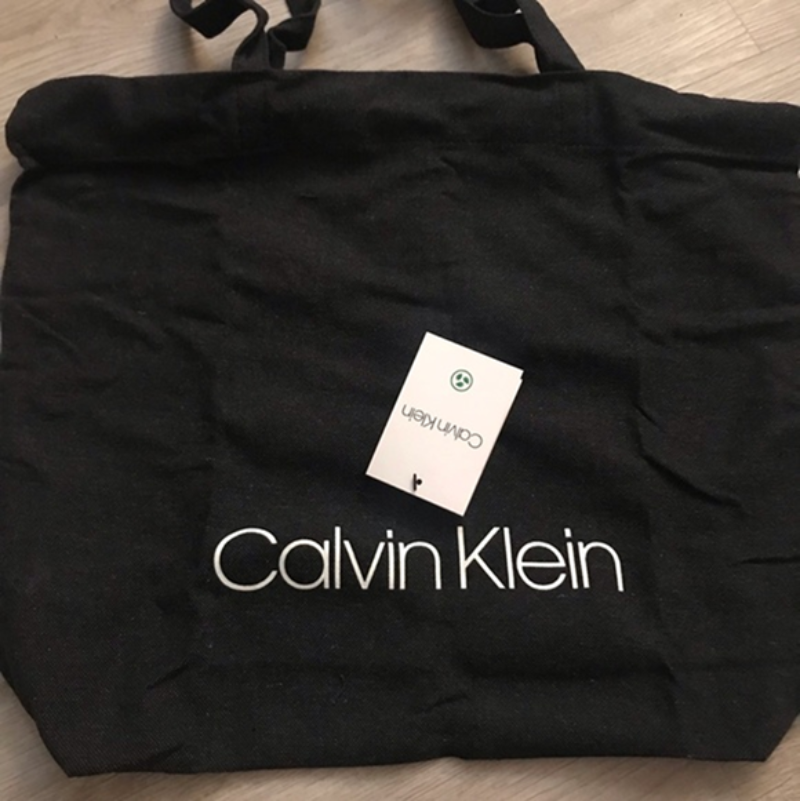
Source: Poshmark
3. Make your packaging easy to “get”
As studies have pointed out, consumers only spend seven seconds to make their buying decision. So you want to avoid overwhelming customers with too much information, written text, or unclear visuals.
The Northern Soda Company combines appealing and artistic visuals on all their beverage cans without compromising on clarity.
The brand and product names are all centered so that the main purpose can be seen very clearly. The artistic package designs provide clarity and stand out.
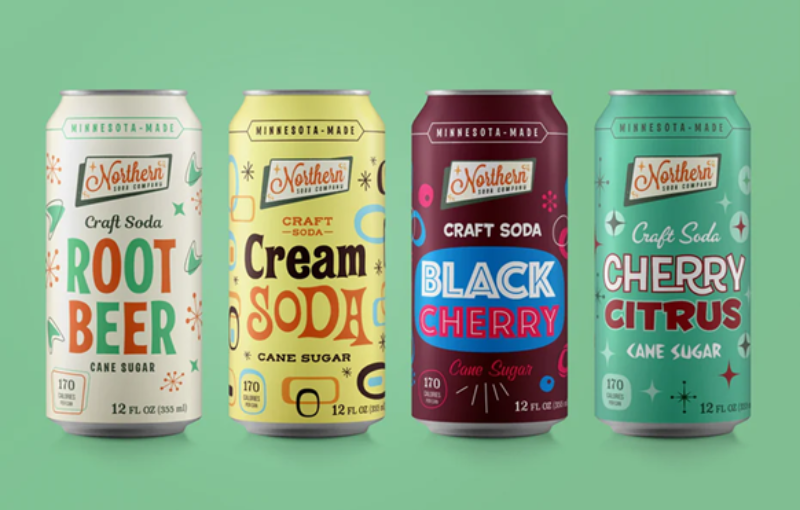
Source: Pepper Pack Design
The fast way to get feedback on packaging
Get clear and collaborative comments right on top of your packaging artwork.
4. Be honest and transparent
We all know that companies like to twist the truth in their marketing campaigns. But wouldn’t it be great if your packaging design could add validity to the claims you are making?
A common way to increase credibility is to use the certificate and logo from a renowned third party. For instance, as a food manufacturer, an NSF certification logo can help prove health and safety standard claims.
Going a step further, your packaging itself can serve as proof. This is what the watch manufacturer, Festina, did with their Profundo 6692 model. The company made the claim that their watches are waterproof and can be used up to 200 meters under water.
To prove their point, the wrist watch model was presented in water-filled bags so that customers could be sure that the watches are safe in all conditions.
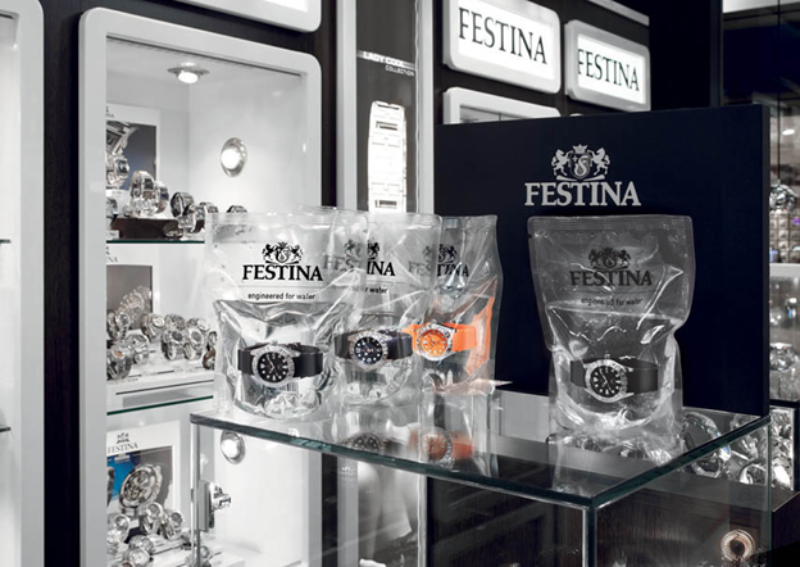
5. Give your packaging life beyond your product
If a package design can be used beyond its purpose and add additional value to the product, the package serves a valuable purpose. The trend of reusing a product box for a different purpose is also called upcycling and requires a high level of creativity.
One good example is the Aleph Apparel upcycle pack. The box can hold small apparel products and can either be recycled or upcycled to become a coat hanger. Customers do not need glue to assemble the coat hanger.
The coat hanger is a perfect example of how to add customer value while offering sustainable packaging solutions.
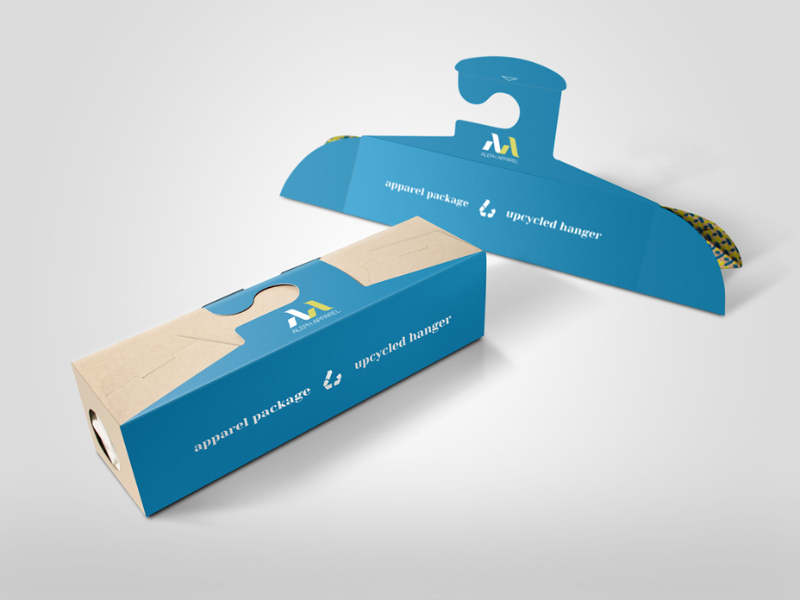
Source: World Design Guide
6. Make your packaging an integral part of the product
As we all know, the actual product itself is only one reason why customers are buying specific goods. People also want utility, i.e. the satisfaction generated from that specific product. That satisfaction also comes from the feeling the purchase transmits to buyers.
A good packaging solution should therefore be part of the overall product story and, in the best case, can even become a selling proposition. This is exactly what we can see at Good Hair Day Pasta from Greenomic. The unique selling proposition (USP) is not the product itself, but its unique presentation.
Notice how the product name in combination with the box and the product itself form a USP and brand identity that could win numerous product packaging design awards.
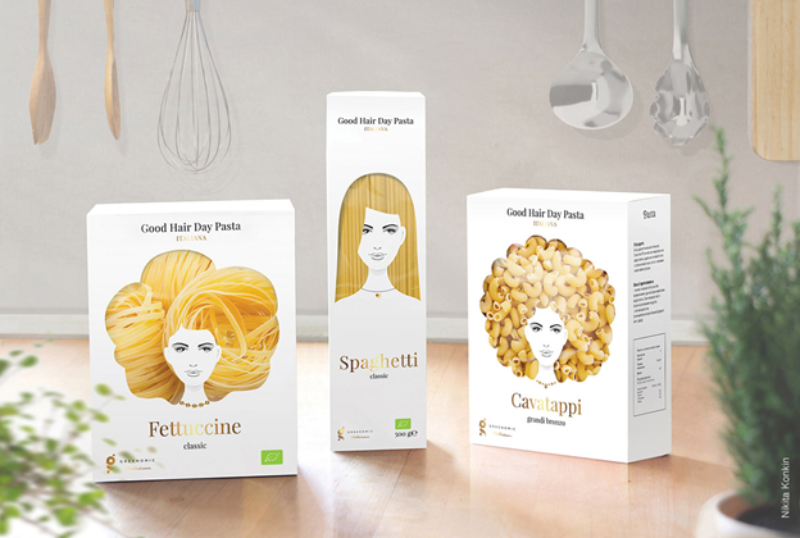
Source: Behance
7. Check that your packaging feels intuitive
The package design should be self-explanatory and inviting without causing the customer confusion over what the product actually is.
An example of great self-explanatory package design is the picture below of fruity juice containers. In a split second, you can determine all 5 different flavors without even having read a single word on the actual box.
Another advantage of the containers is that the box design transmits the feeling that the drinks contain a high fruit content.
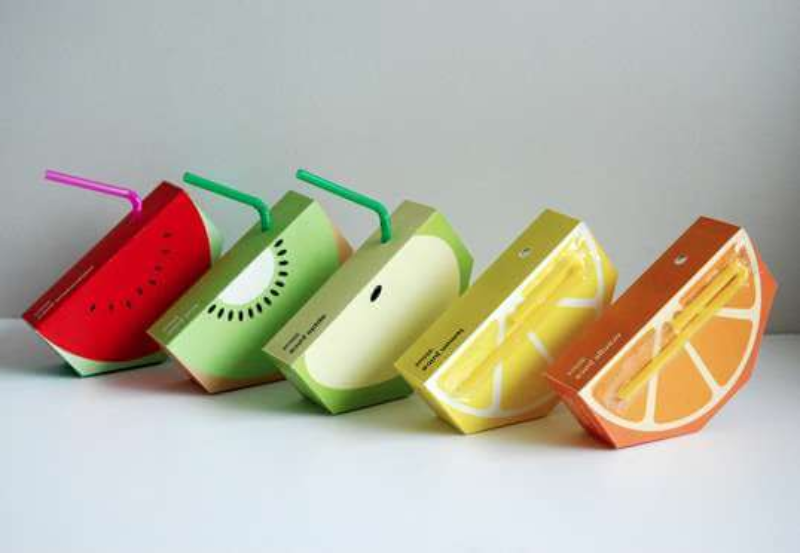
Source: Inspirationfeed
8. Showcase the value of your product through your packaging
When it comes to accessories, people may not realize how this accessory can add value to the main product. One way to solve this problem is to create packaging that shows the purpose of your accessory.
This is what Görtz shoes has done to promote the company’s shoelaces. Typically, shoelaces are presented inside a regular plastic bag, which does not say much about how they will actually look on your shoes.
Görtz’s creative packaging resembles a shoe model, so people get an instant impression and can see and compare the different colors to each other.
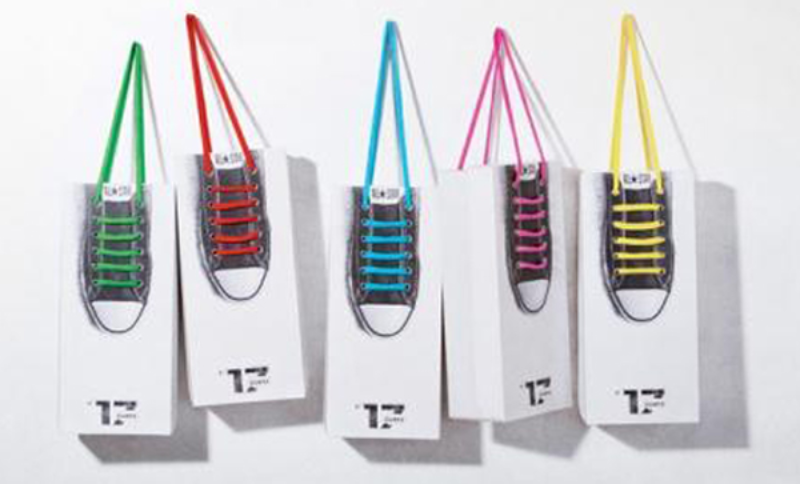
Source: Designer-Daily
9. Make your packaging useful
As we have seen earlier, upcycling is one way to add value to your packaging. However, you do not need to completely repurpose your box. Instead, you can make it a useful extension to the actual product you are selling. This is what we can see at Butter! Better!.
Not only does the name speak for itself, but also the box has a great USP: You can repurpose the lid as a knife to spread the butter.
This makes Butter! Better! a perfect companion for customers’ next picnic in the park.
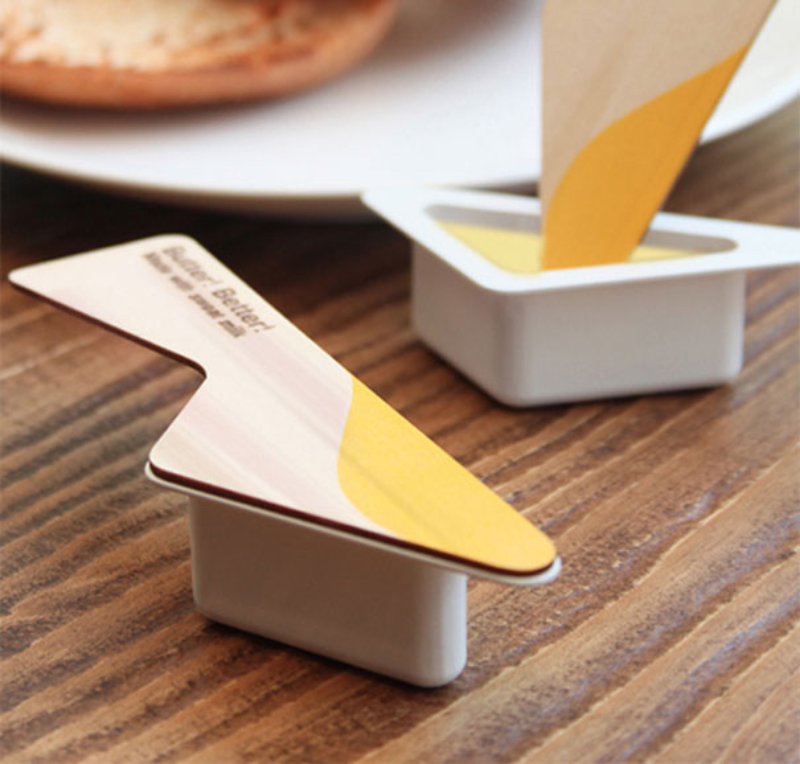
Source: BoredPanda
Four questions every graphic designer should ask when designing product packaging
If you want to design the perfect packaging for your product branding, you ask yourself these four questions before you even get started.
1. Who is the target audience?
Is your target customer the sort of person who appreciates minimalist design? Or do they prefer something more vibrant and colorful?
The more you know about the people who will be buying your products, the better. So talk to them, run workshops with different types of product packaging, and find out what gets their attention.
2. Where will customers find your product?
Does your product’s packaging need to stand out in a retail store environment, online, or both?
By working this out up front, you can help to focus ancillary design elements like sleek logos, fonts, the color palette, and illustration styles.
The fast way to get feedback on packaging
Get clear and collaborative comments right on top of your packaging artwork.
3. What are the practical requirements of your packaging?
When thinking about your product packaging needs, remember that it’s about more than just looks!
How will your product boxes be transported? What will the customer be doing when they try to open your product packaging?
By covering all these things upfront, you can put the user at the heart of your packaging design process.
4. How can you maximize the use of sustainable materials?
The beauty of custom packaging is that every part of the design can be made eco-friendly and sustainable.
Here are a few popular sustainable materials you can use in your product packaging:
- Compostable packaging
- Recycled materials
- Corrugated cardboard
- Biodegradable glassine
- Cornstarch packaging
Final thoughts
I hope you’ve enjoyed exploring this beautiful roundup of packaging design inspiration from brands large and small.
By following our nine best practices, you’re ready to create product packaging that stands out and keeps customers coming back for more.
And if you need a smart way to review your packaging designs, Filestage can help. Start a free trial today to share files, collaborate on feedback, and track approvals – all in one place!

